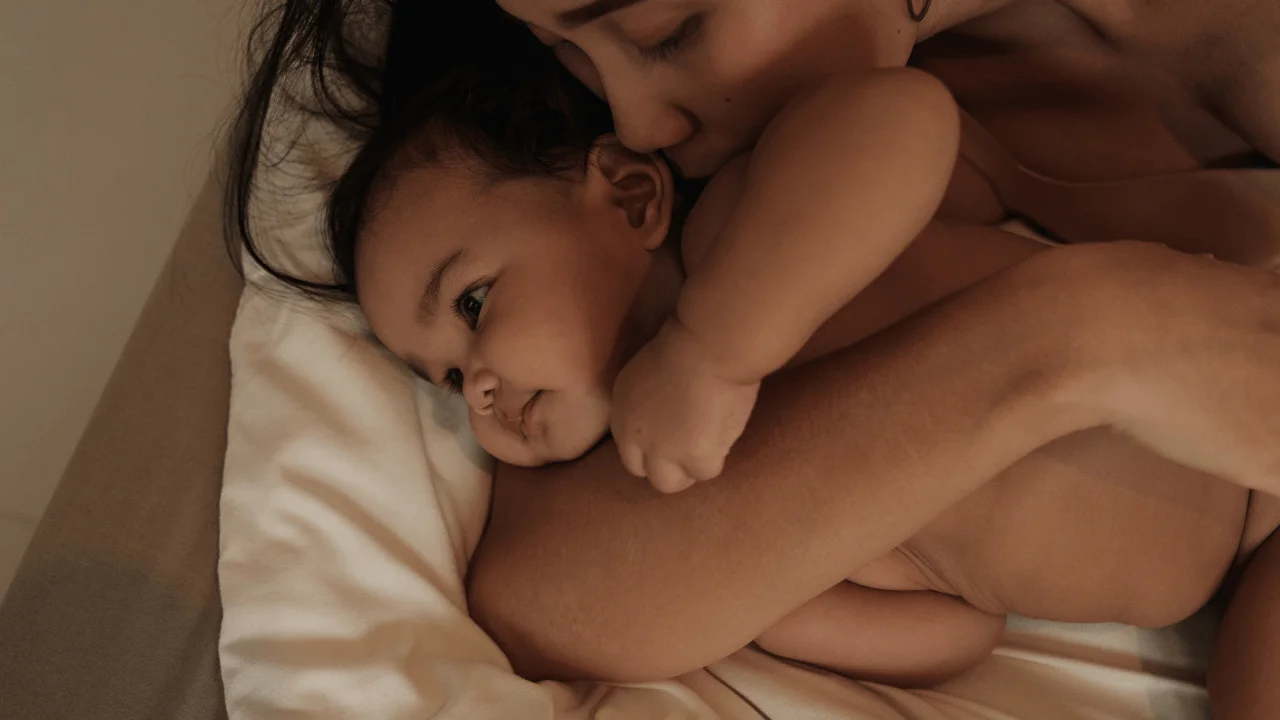
Many women start shivering shortly after they’ve given birth – and while it may seem like a surprising symptom, postpartum chills are a normal occurrence. Experts don’t know exactly what causes these chills, but hormones and some pain medications may play a part. (That’s why chills after a c-section or an epidural are most common, though you can have them with an unmedicated vaginal birth as well.) The shaking after birth usually goes away within an hour. Because shivering can be a sign of fever, let your healthcare provider know if you’re having chills at home.
IN THIS ARTICLE
- What are the postpartum chills?
- What causes postpartum chills?
- How long does postpartum shaking last?
- When to call your doctor about postpartum chills
What are the postpartum chills?
Postpartum chills involve feeling intensely cold and shivering right after you give birth. It may seem as if you’re stuck outside on a freezing winter day without a coat, causing your teeth to chatter and your body to shake. Shivering most often happens one to two hours after you deliver your baby, although it can occur toward the end of labor too.
Although they’re very common, postpartum chills might come as a surprise to many moms. Most of the time, a case of the shakes is nothing to worry about. (There are a few symptoms your medical team will keep on their radar, mainly if your chills are accompanied by a fever, which could be one of the first signs of a potential postpartum infection.)
You may experience postpartum chills if you’ve had an unmedicated vaginal birth, although it’s more likely to happen if you’ve had a c-section or if you’ve received pain medication during labor, especially an epidural. Research suggests that about 20 percent of women who give birth vaginally and don’t receive pain medication have postpartum chills around the time of birth, versus about half of women who receive an epidural or have a c-section.
What causes postpartum chills?
While experts aren’t sure exactly what causes postpartum chills, there are several theories:
- Hormonal changes. Your body undergoes big hormonal changes when you go into labor that may decrease your core temperature, leading to chills.
- A cold environment. Simply spending a long time in a chilly hospital environment can impact your body’s ability to regulate your temperature.
- Pain medications. Pain-relieving drugs, in particular the epidural, can affect your body’s ability to control your core body temperature by opening up blood vessels on the skin. Greater blood flow to your skin increases heat loss.
- Infusions during labor. Receiving a shot of cold epidural medication and other fluids during labor can further increase heat loss.
How long does postpartum shaking last?
Most postpartum chills, including those linked to an epidural or a c-section, go away on their own within 20 to 30 minutes. It’s rare for shaking and shivering during or after labor to last longer than an hour, no matter how you delivered.
While there’s no way to prevent postpartum chills, you can prepare by packing warm clothing in your hospital bag to keep your body more comfortable during the hours you’ll spend in a chilly environment.
If you’re having a c-section, your doctor may give you medication that helps prevent shivering during and after surgery. If your c-section is scheduled, keep as comfortable and warm as possible before the procedure to head off potential shivers and shakes after. Prior to the start of surgery, the operating room staff can place a heated blanket over your shoulders and chest, away from the sterile area.
Shaking during labor and after delivery isn’t pleasant and may even feel a bit scary, but try not to worry: The hospital staff is very familiar with this symptom. Nurses will give you warm blankets and monitor you to make sure all is going as expected. Drinking a warm beverage as soon as you feel ready may also help. Because shivering can cause oxygen loss, you might be given an oxygen mask if you’re experiencing severe shakes.
Try not to strain your body against the shivers, especially if you’ve had a c-section. Doing so could potentially tear the incision.
If shaking is very uncomfortable, don’t hesitate to hand your baby off to your partner or hospital staff for a few minutes. Once the postpartum chills fade, you’ll be better able to focus on the more pleasant (or at least expected) parts of the postpartum experience, such as starting breastfeeding, skin-to-skin contact, and bonding with your baby.
When to call your doctor about postpartum chills
Let your healthcare provider know any time you’re experiencing chills during or after labor – especially those that feel achy to the bone, similar to the flu or a fever.
A slight fever in the first 24 hours after birth is relatively common and usually nothing to worry about. In some cases, an epidural can actually cause a fever. But if you haven’t yet delivered, a sustained elevated body temperature can be risky for your baby and could signal an infection, so your medical team will monitor you closely. They may give you antibiotics or other medications as a precaution.
Spiking a fever in those first several days after birth can also be an early sign of a postpartum infection. Postpartum infections affect about 5 to 7 percent of women in the first six weeks following birth; they can be dangerous and require medical treatment.
In addition to the chills, symptoms to watch out for include:
- A temperature of 100.4°F or higher on any two of the first ten days postpartum, outside of the first 24 hours (fever immediately after delivery is often not a problem)
- Foul-smelling lochia (postpartum bleeding)
- Significant abdominal pain and tenderness
- If you’ve had a c-section, pus, severe redness, or swelling at the incision site (these symptoms usually occur within a week)
Read more about


Add a Comment